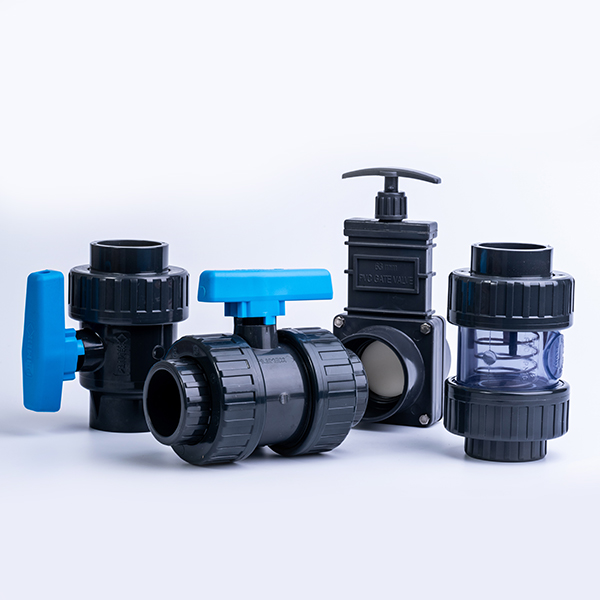The use of Polyvinyl Chloride (PVC) valves in construction projects has gained significant attention in recent years. These versatile valves offer numerous advantages that contribute to cost-effectiveness and efficiency in various construction applications. In this article, we will conduct a comprehensive cost-benefit analysis of PVC valves in construction, exploring their benefits, applications, and potential cost savings.
Understanding PVC Valves
Before delving into the cost-benefit analysis, let’s first understand what PVC valves are and how they function. PVC valves are a type of control valve used to regulate the flow of fluids in pipelines. They are constructed from PVC, a thermoplastic material known for its durability and resistance to corrosion, chemicals, and extreme temperatures.
Advantages of PVC Valves
1. Corrosion Resistance
One of the most significant advantages of PVC valves is their exceptional resistance to corrosion. Unlike metal valves, PVC valves do not rust or corrode when exposed to moisture or aggressive chemicals. This corrosion resistance prolongs the lifespan of the valves and reduces maintenance costs.
2. Cost-Effective
PVC valves are cost-effective compared to their metal counterparts. The initial purchase cost of PVC valves is lower, making them an attractive option for construction projects with budget constraints. Additionally, the reduced need for maintenance and replacement further lowers long-term costs.
3. Lightweight
PVC valves are lightweight, which simplifies transportation and installation. Their ease of handling reduces labour requirements during construction, leading to cost savings in terms of manpower and equipment.
4. Easy Installation
Installing PVC valves is a straightforward process. They can be easily connected to PVC pipes using solvent cement, requiring minimal specialized tools or skills. This ease of installation accelerates construction timelines and minimizes labour costs.
5. Chemical Resistance
In construction projects involving chemicals or wastewater, PVC valves excel due to their chemical resistance. They can withstand exposure to a wide range of chemicals without degradation, ensuring reliable performance in various applications.
6. Low Friction Loss
PVC valves have smooth internal surfaces that minimize friction loss in the pipeline. This results in improved flow rates and reduced energy consumption, contributing to long-term cost savings.
Applications of PVC Valves in Construction
PVC valves find applications in a variety of construction projects. Here are some common areas where they offer cost-effective solutions:
1. Water Supply Systems
PVC valves are widely used in water supply systems, including potable water distribution and irrigation. Their resistance to corrosion and chemicals makes them ideal for ensuring the purity and reliability of water delivery systems.
2. Drainage and Sewer Systems
In drainage and sewer systems, PVC valves play a crucial role in controlling the flow of wastewater. Their chemical resistance and low friction properties help maintain the efficiency of these systems while reducing maintenance costs.
3. HVAC Systems
Heating, Ventilation, and Air Conditioning (HVAC) systems in buildings benefit from PVC valves due to their lightweight construction and ease of installation. These valves contribute to efficient temperature control and air circulation.
4. Chemical Processing Plants
Chemical processing plants require valves that can withstand aggressive chemicals. PVC valves are well-suited for these environments, offering reliability and durability while reducing the risk of leaks or failures.
Cost-Benefit Analysis
Now, let’s delve into the cost-benefit analysis of using PVC valves in construction:
Cost Savings
-
Initial Cost: PVC valves have a lower upfront cost compared to metal valves. This cost advantage is especially significant in large-scale construction projects where multiple valves are required.
-
Maintenance: PVC valves require minimal maintenance over their lifespan. The absence of corrosion eliminates the need for costly repairs or replacements, resulting in long-term cost savings.
-
Installation: The lightweight nature of PVC valves simplifies installation and reduces labour costs. Construction crews can work more efficiently, saving both time and money.
-
Energy Efficiency: PVC valves’ low friction properties contribute to energy efficiency by reducing the power required to pump fluids through the pipeline. This leads to lower operational costs in systems with high flow rates.
Environmental Benefits
-
Recyclability: PVC is a recyclable material, which aligns with sustainable construction practices. At the end of their useful life, PVC valves can be recycled, reducing environmental impact.
-
Energy Efficiency: The reduced energy consumption associated with PVC valves results in lower greenhouse gas emissions, contributing to a greener construction industry.
Durability
PVC valves have a long service life due to their resistance to corrosion and chemicals. This durability ensures reliable performance for years, reducing the frequency of replacements and associated costs.
Conclusion
In conclusion, PVC valves offer a compelling cost-benefit proposition in construction. Their corrosion resistance, cost-effectiveness, lightweight design, and ease of installation make them a valuable choice for a wide range of applications. The cost savings, environmental benefits, and durability associated with PVC valves make them an attractive option for construction projects looking to optimize efficiency and reduce long-term expenses. As the construction industry continues to evolve, PVC valves are poised to play a pivotal role in shaping cost-effective and sustainable building practices.


